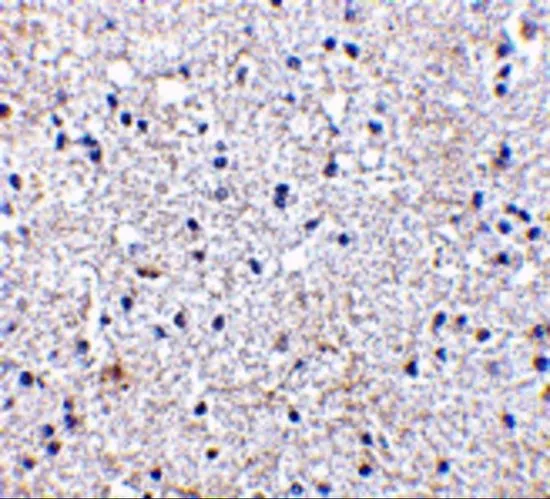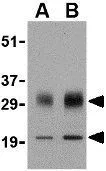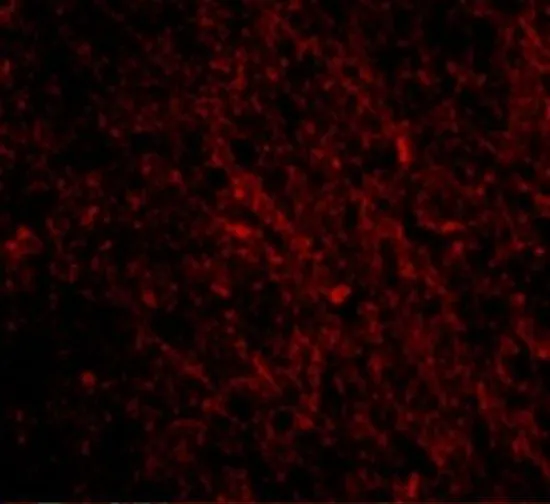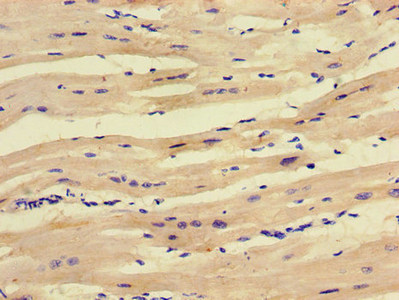
IHC-P analysis of human brain tissue using GTX85056 SCO1 antibody. Working concentration : 2.5 microg/ml
SCO1 antibody
GTX85056
ApplicationsWestern Blot, ELISA, ImmunoHistoChemistry, ImmunoHistoChemistry Paraffin
Product group Antibodies
ReactivityHuman, Mouse, Rat
TargetSCO1
Overview
- SupplierGeneTex
- Product NameSCO1 antibody
- Delivery Days Customer9
- Application Supplier NoteWB: 0.5 - 1 microg/mL. IHC-P: 2.5 microg/mL. *Optimal dilutions/concentrations should be determined by the researcher.Not tested in other applications.
- ApplicationsWestern Blot, ELISA, ImmunoHistoChemistry, ImmunoHistoChemistry Paraffin
- CertificationResearch Use Only
- ClonalityPolyclonal
- Concentration1 mg/ml
- ConjugateUnconjugated
- Gene ID6341
- Target nameSCO1
- Target descriptionsynthesis of cytochrome C oxidase 1
- Target synonymsMC4DN4, SCOD1, protein SCO1 homolog, mitochondrial, SCO cytochrome c oxidase assembly protein 1, SCO cytochrome oxidase deficient homolog 1, SCO1, cytochrome c oxidase assembly protein
- HostRabbit
- IsotypeIgG
- Protein IDO75880
- Protein NameProtein SCO1 homolog, mitochondrial
- Scientific DescriptionSynthesis of cytochrome c oxidase 1 was initially identified in yeast as one of two cytochrome c oxidase (COX) assembly proteins that enable the assembly of cytochrome c holoenzyme, a complex that catalyzes the transfer of reducing equivalents from cytochrome c to molecular oxygen and pumps protons across the inner mitochondrial membrane. Like their yeast homologs, the function of both SCO1 and SCO2 are dependent on copper ion binding. Mutations in either gene can lead to cytochrome c oxidase respiratory chain defects, with a missense mutation in human SCO1 (P174L) associated with a fatal neonatal hepatopathy when the second allele is also non-functional, suggesting the pathology is due to loss of function. It has been suggested that this mutation alters the SCO1 affinity for the copper (I) ion, thus impairing the efficiency of copper transfer to the cytochrome c oxidase. At least two isoforms of SCO1 are known to exist and both are recognized by the SCO1 antibody. This SCO1 antibody has no cross-reactivity to SCO2.
- ReactivityHuman, Mouse, Rat
- Storage Instruction-20°C or -80°C,2°C to 8°C
- UNSPSC12352203







